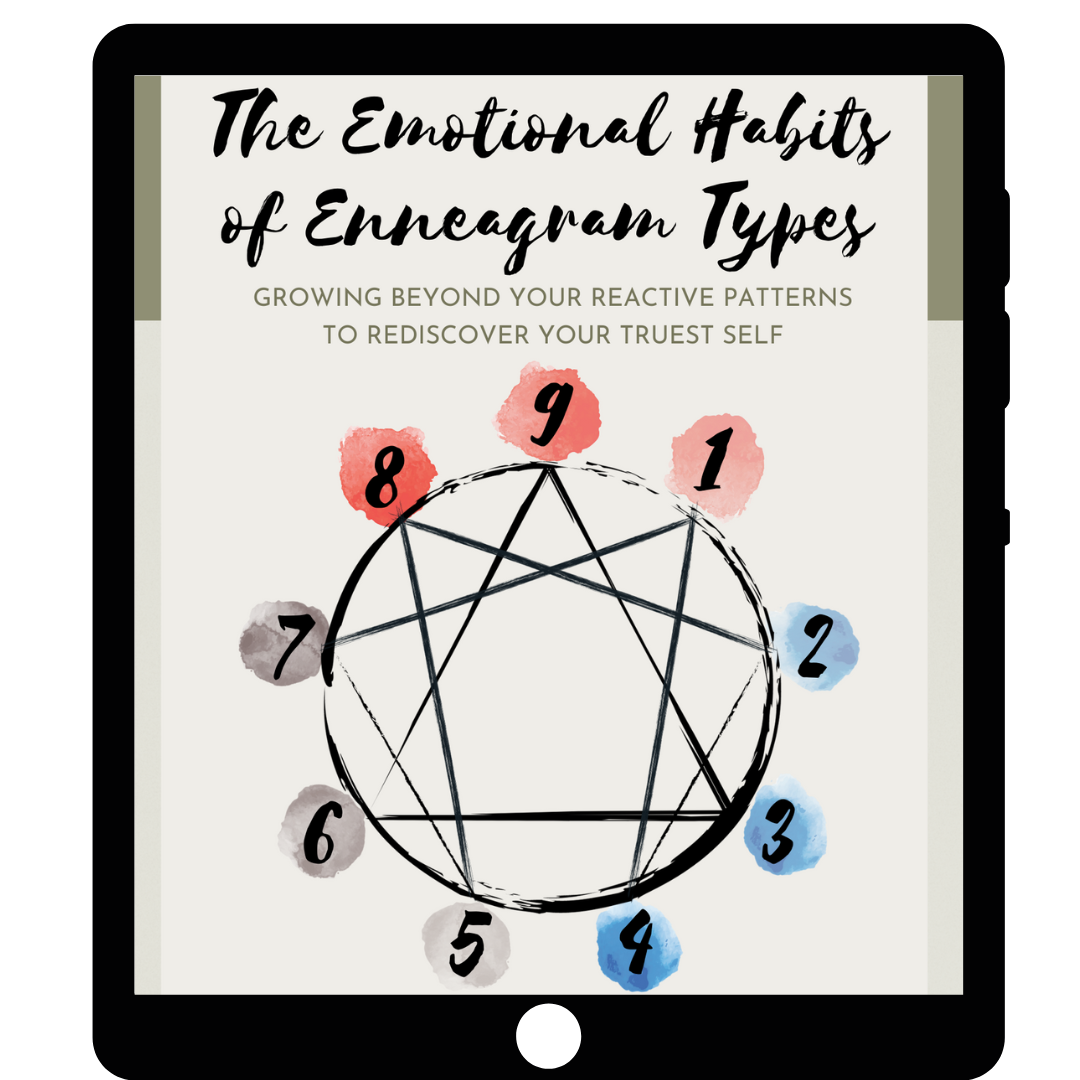My therapist colleague Melinda Olsen (Inviterra Counseling) and I are writing several blog series about the Enneagram, a comprehensive yet compact personality framework that reveals our reactive, “autopilot” patterns of thinking, feeling, doing, and relating.
In this series, someone from each Enneagram Type (Types One through Nine) will be sharing about their own journey of discovering and using the Enneagram for deep healing and personal growth.
In this post, my husband Josh, a teacher and academic dean at a private high school, has written about Type 1.
Here are the other posts in this series that are published so far:
Type 2 - Melinda Olsen, LMFT
Type 3 - Morgan Hancock, LMFT
Type 4 - Joanne Kim, LMFT
Type 5 - Alyssa Harris
Type 6 - Jonathan Siu
Type 7 - Stefie Dominguez
Type 8 - Marianna Torres
Type 9 - Lorren Siu, LMFT
What does it mean to be an Enneagram 1?
IDEALIST
On a good day, Type 1’s can find a lot of delight. When you get something just right, and things work out, the high is so good.
It’s not just for themselves! Seeing others gain (in a way that aligns with our personal ideals) is also rewarding.
Good days can be rare because life doesn’t work like that very often.
LOUD INNER CRITIC
The inner critic kicks in. For some of us, it lashes out at ourselves before turning its frustration on the rest of the world. You might see it show up as imposter syndrome, defensiveness, complaint, anger, and more. It highlights the gap between the perfect and imperfect. We might find ourselves despairing at the infinite chasm between what is and what could be.
At a glance, you might identify us as rule-followers. For me, that’s never been a good enough descriptor. We have strong inner values that we’re trying to uphold. It may or may not line up with the rules. It may or may not be coherent, depending on our maturity. But you can bet there’s something we’re trying to live up to.
As a result, we’re frequently driven into journeys of self-improvement. It’ll happen for big life changes or small, daily tasks. These endeavors take us to places we might want to share with you if you are important to us. It might, at times, also be overbearing to be on the receiving end of that. (I’m working on it!)
When did you first learn you were Enneagram Type One?
My wife, Joanne, introduced me to the Enneagram framework and had me take a test. To be honest, my Type 1-ness has never been a surprise to anyone.
What do you wish people knew about Enneagram Type Ones?
Sometimes we are so focused on ideals that we forget who we were trying to serve in the first place. But Type 1’s can be very caring, even among the most cynical members of our type. We have trouble expressing care on a personal level while we dwell on bigger picture things. (I can recall circumstances where I have chosen to turn off my feelings so I can focus on something I’ve deemed more important than myself.)
“Getting it right” can mean two things. One is maximizing the benefits for all. When things work as they should, life is good.
I hate admitting this, but here goes. Getting it right also makes us unassailable. We’re sensitive to criticism, and perfection (falsely) protects us.
When I observe fellow Type 1’s being particularly critical, I flinch at how the other 8 types will take their words. After that, I cringe at how that Type 1’s inner voice must sound. Your words can sting us, but it’s hard to find a voice worse than our inner critic.
As a result, when we’re down, we can seem impossible to soothe. In our own heads, the inner critic seems well-reasoned and thought out.
From experience, I find that the inner critic needs to be disarmed before we’re ready to hear words of affirmation and encouragement.
One thing you're working on to grow beyond your type
I’m working on chilling out.
It includes laughing off mistakes, letting things break, and reminding myself that the world and its people are more resilient than I give it credit for.
It means showing grace to everyone, including myself.
Even more daunting is to hold my ideals with a looser grip because while I believe there is a standard right and wrong, there are many beautiful ways to get it right.
(As I type this out, it occurs to me that I can appropriate the perspectives of Types 2-9 and break the mold altogether. Is that very Type 1 of me?)
Regardless of the path, I want to learn to enjoy the process along the way and celebrate the victories on the way to my ideals. At the very least, even when I fall short, I’ll be a lot more bearable to be around!
What are your Enneagram type's emotional habits?
Grab this free guide that shows you how to grow beyond the patterns that keep you stuck!
Don't know your Enneagram type?
© Copyright 2022 Joanne B. Kim. All rights reserved.
JOANNE B. KIM, LMFT
Joanne is a Licensed Marriage & Family Therapist and Certified Brainspotting Practitioner in San Jose, CA, who loves helping people create emotionally thriving relationships. She helps people EXHAUSTED by anxiety, shame, and an allergic reaction to anger create VIBRANT relationships where they matter, too.
Many of her clients are:
(1) the highly responsible, conscientious, and empathic types
(2) Enneagram Type Ones, Twos, Fours, or Nines
(3) Highly Sensitive Persons (HSPs)
(4) adult survivors of emotional abuse and neglect
The most common words spoken by those who’ve sat with Joanne:
“I thought it was just me. I’m NOT crazy!”
“I can finally figure out what to do with all these feelings!”























See how the Enneagram and genogram reveal trauma, boundaries, and generational patterns in families like the Bridgertons — and maybe yours too!